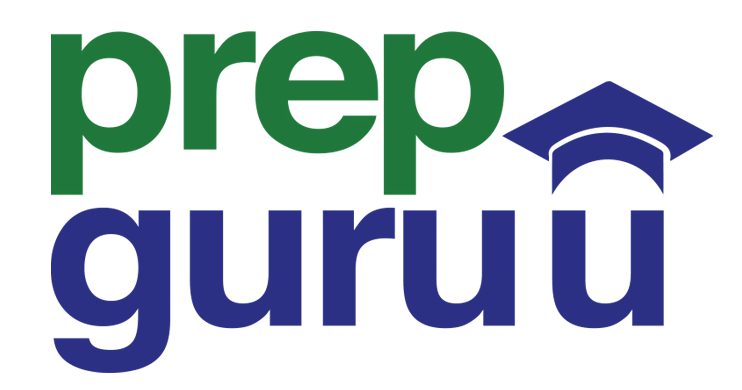Common University Entrance Test (CUET) is an all-India entrance exam for admission to various UG programmes. It includes three sections- Language Test, Domain-specific Test, and General Test. The first two sections are compulsory for all students giving the exam. Many students opt for Chemistry out of 27 subjects in their CUET domain-specific test. It consists of 50 questions, out of which candidates have to attempt 40, and each correct answer carries 5 marks. NTA has officially released the CUET exam date, and the application process is expected to start by February 2023.
If you are also planning to pursue a Chemistry course after your 12th class, then it’s essential to get familiar with the CUET Chemistry syllabus 2023. It covers most of the topics you have studied in your senior secondary. So, revise everything thoroughly you have been taught in the last year of your school. The syllabus doesn’t focus on what’s included in class 11th, making it easier for aspirants to prepare for their CUET exam. We have listed all the units and topics of the CUET Chemistry syllabus in this blog. Our experts have also shared the exam pattern. Have a look:
CUET Chemistry Eligibility Criteria
Students seeking admission to top universities through CUET must check eligibility criteria and other requirements to ensure a hassle-free application process. To make things convenient and easier for you, we have mentioned all the requirements of the CUET Chemistry exam below:
- For some colleges, it is mandatory that candidates have studied Chemistry in their 11th and 12th standards. Some colleges may not require it, so please check the official websites of every college before applying.
- Must score minimum valid marks in Chemistry to be eligible for CUET.
- Relaxation allowed for SC/ST/OBC/EWS/PWD category students.
Also Read: CUET Application Form 2023: Fee, Procedure and Important Documents
CUET Chemistry Syllabus 2023
Now that you are familiar with the eligibility requirements, it’s time to go through the Chemistry syllabus for the CUET exam.
| Unit |
Unit Name |
Topics |
| I |
Solid State |
- Classification of solids based on unlike binding forces- molecular, ionic, covalent, and metallic solids.
- Amorphous and crystalline solids
- Unit cell in three-dimensional and two-dimensional lattices.
- Calculation of point defects, the density of unit cells, number of atoms per unit cell in a cubic unit cell, packing in solids, voids, and packing efficiency.
- n- and p-type semiconductors.
- Electrical and magnetic properties.
- Band theory of metals, semiconductors, conductors, and insulators.
|
| II |
Solutions |
- Expression of concentration of solutions of solids in liquids.
- Abnormal molecular mass.
- Types of solutions.
- Colligative properties- – the relative lowering of vapour pressure.
- Determination of molecular masses (using colligative properties).
- Raoult’s law.
- Van’t Hoff factor.
- Osmotic pressure.
- The solubility of gases in solid solutions and liquids.
- Depression of freezing point and elevation of boiling point.
|
| III |
Electrochemistry |
- Kohlrausch’s Law.
- EMF of a cell.
- Redox reactions.
- Galvanic cells and Electrolytic cells.
- Nernst equation and its implementation to chemical cells.
- Variations of conductivity with concentration.
- Specific and molar conductivity.
- The connection between EMF of a cell and Gibbs energy change.
- Corrosion.
- Conductance in electrolytic solutions.
- Electrolysis and laws of electrolysis.
- Standard electrode potential.
- Fuel cells.
|
| IV |
Chemical Kinetics |
- Factors affecting rates of reaction.
- Rate of a reaction.
- Activation energy.
- Order and molecularity of a reaction.
- Integrated rate equations and half-life.
- Arrhenius equation.
- Collision theory.
- Rate law and specific rate constant.
|
| V |
Surface Chemistry |
- Catalysis.
- Adsorption.
- Properties of colloids.
- Enzyme catalysis.
- Lyophilic and lyophobic.
- Colloidal state.
- Brownian movement.
- Emulsions and their type.
- Electrophoresis.
|
| VI |
General Principles and Processes of Isolation of Elements |
- Principles and methods of extraction.
- Occurrence and principles of copper, aluminium, iron, and zinc extraction.
|
| VII |
p-Block Elements |
- Electronic configuration of p-block elements.
- Physical & chemical properties of p-block elements.
- The oxidation state of p-block elements.
- General trends in the periodic table.
- Exceptions in various elements of p-block.
- Preparation & use of ammonia, sulphur dioxide, nitric acid, sulphuric acid, and hydrochloric acid.
- Oxoacids of p-block elements.
- Uses of p-block elements.
|
| VIII |
d and f Block Elements |
- Electronic configuration.
- General trends in properties of elements in the periodic table.
- Lanthanide contraction and its consequences.
- Oxidation states.
- Catalytic and magnetic properties.
- Alloy formation.
- Preparation and properties of KMnO4 and K2Cr2O7.
|
| IX |
Coordination Compounds |
- Importance of coordination compounds.
- Isomerism.
- Werner’s theory, VBT, and CFT.
- IUPAC nomenclature.
- Bonding of coordination compounds.
- Ligands.
- Colour, coordination number, shapes, and magnetic properties.
|
| X |
Haloalkanes and Haloarenes |
- Nature of C-X bond in haloalkanes and haloarenes.
- Nomenclature of haloalkanes and haloarenes.
- Substitution reactions of haloalkanes and haloarenes.
- The optical rotation of haloalkanes.
- Uses & environmental effects of trichloromethane, DDT, iodoform, dichloromethane, freons, and tetrachloromethane.
|
| XI |
Alcohols, Phenols, and Ethers |
- Method of preparation of alcohols, ketones, and ethers.
- Nomenclature of alcohols, ketones, and ethers.
- Physical & chemical properties of alcohols, ketones, and ethers.
- Uses of alcohols, ketones, and ethers.
- Identification of 1°, 2°, and 3° alcohols.
|
| XII |
Aldehydes, Ketones, and Carboxylic Acids |
- Nomenclature and nature of carbonyl compounds in aldehyde, ketone, and carboxylic acid.
- Properties of aldehydes, ketones, and carboxylic acids.
- Uses of aldehydes, ketones, and carboxylic acids.
|
| XIII |
Organic Compounds Containing Nitrogen |
- Classification and nomenclature of amines.
- Physical and chemical properties of nitrogen-containing compounds.
|
| XIV |
Biomolecules |
- -amino acids.
- D-L configuration.
- Classification of carbohydrates.
- Peptide bonding.
- Proteins and their structures.
- Denaturation of proteins.
- Importance of carbohydrates.
- Enzymes.
|
| XV |
Polymers |
- Biodegradable and non-biodegradable polymers.
- Natural and synthetic polymers.
- Methods of polymerisation.
|
| XVI |
Chemistry in Everyday Life |
- Chemicals in medicines – analgesics, tranquilizers, antiseptics, disinfectants, antimicrobials, antifertility drugs, antibiotics, antacids, antihistamines.
- Chemicals in food– preservatives, artificial sweetening agents, elementary idea of antioxidants.
- Cleansing agents – soaps and detergents, cleansing action.
|
Also Read: Full Guide To CUET Admission Process 2023
CUET Exam Pattern
Here’s a brief insights intio CUET Chemistry exam pattern:
| Particulars |
Details |
| Name of the Exam |
CUET (Common University Entrance Test) |
| Medium of Instruction |
13 languages (Hindi, English, Urdu, Gujarati, Tamil, Bengali, Assamese, Kannada, Punjabi, Odia, Telugu, Malayalam, Marathi) |
| Mode of Exam |
Computer-based |
| Frequency of Exam |
Once a year |
| Types of Questions |
Multiple-choice questions (MCQs) |
| Total Questions |
50 |
| Questions to be Attempted |
40 |
| Total Marks |
200 |
| Duration |
45 minutes |
| Marking Scheme |
- 5 marks are rewarded for each correct answer
- 1 mark is deducted for every wrong answer
- 0 mark for unattempted questions
|
Also Read: CUET 2023: Important Exam Preparation Tips and Revision Tips
Conclusion
This article discussed the entire CUET Chemistry syllabus in detail. Now, it’s your turn to study all 16 units thoroughly and prepare efficiently for the exam. CUET is a great move and will reform the Indian education system. It is a highly-competitive exam, so candidates must start preparing as soon as possible to score higher marks and get admission to top colleges.
You can study from your school books as all the topics are from class 12th. This will make revision easier and faster for you. Moreover, you can join CUET coaching for end-to-end guidance from subject experts. They will suggest the best books to refer to, and their training will improve the chances of your success. Whether you join coaching or prepare yourself, be consistent and put your best foot forward. All the Best!


